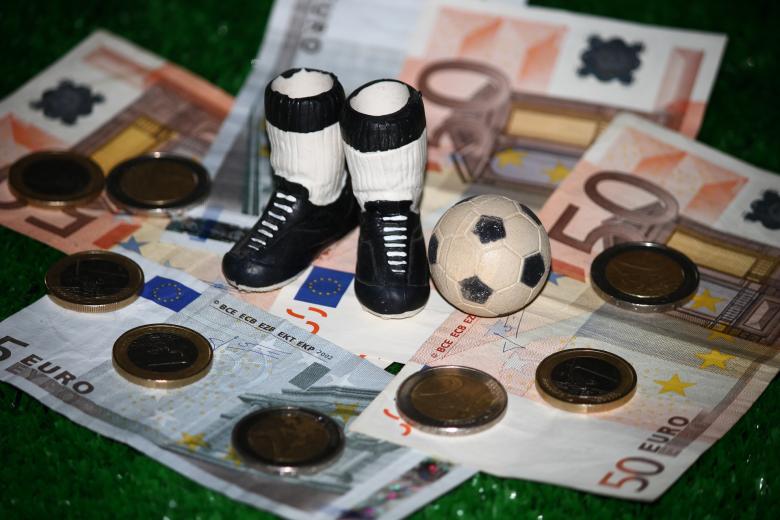Spain report - Corrupting football, the beautiful game (part 2)
Researched and written by Teresa Vazquez Lopez. The Spanish football sector is interesting to analyse since Spain is a relatively young democracy whose constitutions usually often reference to sport.
Moreover, the Spanish football clubs have been one of the most successful ones in international competitions in the last decade.
In 2014, the Spanish main medias reported that Real Madrid, one of the country’s oldest clubs, is planning to remove Christian cross from official crest after the National Bank of Abu Dhabi sponsored a lucrative deal. It is believed that the change is to pacify Muslim supporters in the UAE, although it hasn’t been altered outside the region. It is believed that the change is to pacify Muslim supporters in the United Arab Emirates, although it has not been altered outside the region.
Another current phenomenon are Chinese companies investing in European football clubs. For instance, in 2015 a Chinese company bought the club Atletico de Madrid. Meanwhile, the Spanish football league “La Liga” bets big on India. The league is planning significant investments in India. According to its president Javier Tebas, impacts like Brexit or the possible Catalan separation, make India a very interesting strategic market. The most important area “La Liga” is planning investments in India is at the grassroots level. Tebas wants the league work closely with Indian broadcaster Sony Pictures Networks India (SPN), what he sees as the first vehicle to reach to the viewer in the sub-continent.
The Sociedad Anónima Deportiva (Public Limited Sports Company) is a special type of public limited company in Spain. The new legal status was introduced in 1990 to improve financial management and transparency in sports clubs. For instance, the football club “Sevilla Fútbol Club S.A.D.” is to 32% owned by the Spanish Grupo de Utera and the rest by shareholders, like the “Conarsa SL & Universal Business Consulting SA” which owns 11%. However, due to historical reasons Athletic Club, FC Barcelona, Real Madrid and Osasuna were allowed to retain their status as non-commercial sports associations.
Significant shareholding purchase of 5% or more must be communicated to the Consejo Superior de Deportes (Spanish High Sports Council) which is the Spanish Government organisation for directing the development of sport within the Spain. It is a non-departmental public body of the Ministry of the Presidency. According to the limitations on share purchase the authorization will not be granted: to another football club or football SAD, to an individual or corporation with a direct or indirect shareholding of 5% or more in another football SAD or in other circumstances when fair play in the League could be compromised.
Moreover, according to the sportspersons labor conditions, legal compensation is paid for unfair dismissal exempt from Personal Income Tax. The current Corporate Income Tax rate of clubs is 25% and 30% for SADs. There are also conflicting aspects. One is the payment of indemnity clause by a 3rd club since it is not clear whether the income is subject to Personal Income Tax. There are also alternatives to usual investment in sports. Therefore, a third party, which is usually an Investment Fund, acquires a % of the economic rights arising from the federative rights of the player. Consequently, in the event of a player transferring to another club, the investment fund is entitled to claim its % of the transfer amount.
This blog was written by Teresa Vazquez Lopez as part of the Premium Project on “Corruption in Football.” The Premium Team consists of Teresa Vazquez Lopez (Spain Report), Aurelie Wertz (England Report), Hanna Harnisch (Germany Report), and Marije Ariëns (the Netherlands Report).
Published on Law Blogs MaastrichtRead the 1st blog Introduction
Read the 3rd blog England report
Read the 4th blog Germany report
Read the 5th blog Netherlands report
Read the 6th blog Preliminary conclusion
-
Preliminary conclusion
Football for sale: what is the problem, and what are the solutions? Read our previous reports (Spain, England, Germany and the Netherlands) to find out.

-
The Netherlands report, corrupting football (part 5)
Researched and written by Marije Ariëns. For the clubs, accepting foreign investments means more possible room for improvement of the club and more successful transfers. However, it also means there will be less insight into where the money that finances these improvements comes from and through...

-
England Report, corrupting football (part 3)
Researched and written by Aurelie Wertz. Twenty-eight clubs in the English top four divisions are now substantially owned by overseas investors! Overall, we see a general culture of acceptance or perhaps that of wilful ignorance by the fans regarding the mysterious and multiple complex aspects of...
